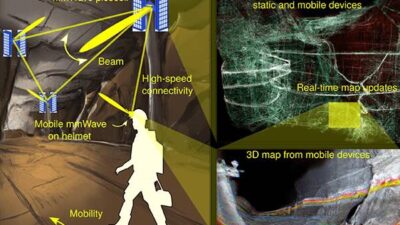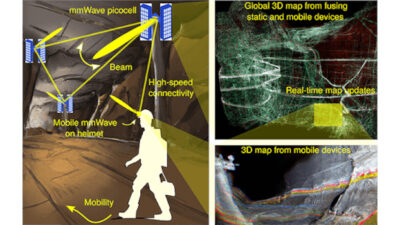Suppliers of photoelectric proximity, ultrasonic proximity, laser linear displacement, and ultrasonic linear displacement sensors are all likely to carve more and larger niches in their future U.S. markets. With increased sensing ranges, growing user confidence and friendlier price tags, these sensor types will displace others, as well as help create a multitude of new applications.
Suppliers of photoelectric proximity, ultrasonic proximity, laser linear displacement, and ultrasonic linear displacement sensors are all likely to carve more and larger niches in their future U.S. markets. With increased sensing ranges, growing user confidence and friendlier price tags, these sensor types will displace others, as well as help create a multitude of new applications. Much of the U.S. market’s growth over the next five years is expected to be in sales of these sensors.
Venture Development Corp.’s (Natick, Mass.) study, “The U.S. Market for Proximity, Photoelectric, and Linear Displacement Sensors, Sixth Edition,” forecasts that sales of these products will increase at a compound annual growth rate (CAGR) of 6.6% from $910 million in 1999 to $1.25 billion in 2004.
The U.S. markets for several product categories are expected to grow much faster than the overall market. The fastest market growth rates are projected for photoelectric and ultrasonic proximity sensors, laser displacement sensors, and ultrasonic displacement sensors. Measured in units, sales for these products are expected to increase at between 8.5% and 17.2% CAGRs. However, average price declines are expected for all these products, and increases in dollar volume sales are forecast at somewhat lower 7.4% to 12% CAGRs.
Proximity sensors
Photoelectric proximity sensors make up the largest of the four markets with the highest growth rates. The U.S. photoelectric sensor market is emerging from a downward price pressure period that reduced the average sales price close to 35% over the last five years. Thus, while growth in unit shipments to the market remained strong, dollar volume growth was low. This period allowed several Asian companies to strengthen positions in the U.S. market with low-priced imports, providing end-users with more sensor choices than ever.
In the past, high prices, as well as the relatively recent emergence in the market, limited acceptance of ultrasonic proximity sensors. In recent times, however, prices have been dropping, and this trend is expected to continue. Also, users are beginning to better understand the versatility, long-range sensing capability, and suitability of ultrasonic proximity sensors for difficult applications, including high reliability in harsh environments.
Displacement sensors
Laser displacement sensors are also gaining acceptance in a wide variety of market segments. From the electronics and semiconductor industries to the metalworking and automotive industries, laser displacement sensors are providing accurate position measurements. The prices of laser sensors are falling, making them more attractive to users. Laser sensors can provide unparalleled noncontact displacement measurement of extremely small targets at reasonably large distances. These sensors are ideal for sensing small nonmetallic targets, and they come in relatively small packages. These benefits will likely support a 17% CAGR unit increase in the U.S. market for the next five years.
Ultrasonic linear displacement sensors are very similar to their technological brethren in the proximity sensor realm and are chosen for many of the same reasons. Users are taking notice of attractive performance characteristics and falling prices, and incorporating these into a variety of applications. Like the laser linear displacement sensors, these are suitable for long range measurements, and competition can be expected to intensify between the two.
Author Information
Brian Totten, analyst/consultant, Venture Development Corp., [email protected] . For more a information, visit



